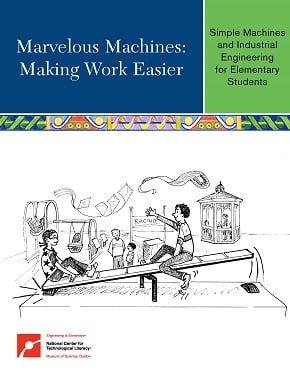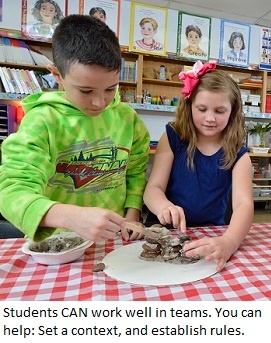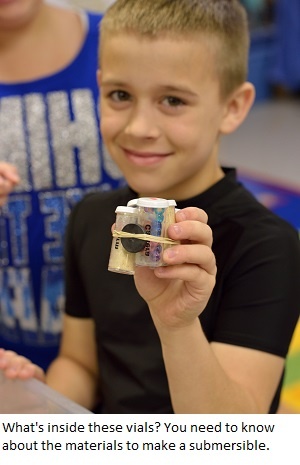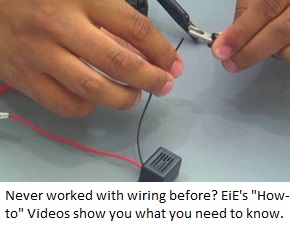If you’re teaching “Marvelous Machines: Making Work Easier," EiE's industrial engineering unit, our collaborators at the Science Museum of Minnesota (SMM) have some tips for teaching Lesson 4 (“Improving a Factory Subsystem"). The lesson calls for kids to use what they’ve learned about simple machines in science class to design a model “loading dock” that helps a potato chip factory run more smoothly. Try these five fast tips to save time, reduce classroom chaos, and most importantly, enhance your students’ learning!
Engineering Habits of Mind | EiE Teaching Tips | Thursday, November 19
Ask EiE: What to Do About Engineering Fails
Each Thursday on the EiE Blog, we bring you tips for teaching elementary engineering. Today's guest blogger is EiE professional development provider Elissa Jordan.
When I work with teachers who are just starting to implement Engineering is Elementary, I often see resistance to the idea that failure is highly valued in engineering.
When a student designs a technology that doesn’t work as intended—say, a model maglev train that doesn’t levitate, or a solar oven that doesn’t get hot enough—it’s distressing! We want students to have positive, affirming experiences in school, not be discouraged.
So it's tempting to “help” kids who seem to be making ineffective design choices by purposefully leading them to better ideas. It seems like a supportive strategy. But in fact, it can be counterproductive.
EiE Teaching Tips | Implementing EiE | Thursday, November 12
Ask EiE: Do my student engineers HAVE to work in teams?
Every Thursday on the EiE Blog, we bring you tips and tricks that help you teach your best.
During every Engineering is Elementary (EiE) professional development workshop, we ask teachers to wear their “Student Hats” while they work through the hands-on engineering activities, just the way their students will. Afterwards, they put on their “Teacher Hats” to reflect on the experience. Recently, during the “Teacher Hat” debrief, one teacher raised her hand, looking concerned. “Do my students HAVE to work in teams?” she asked. “I think there’ll be too many behavior issues. It will detract from the content of the lessons.”
Great question. SHOULD you allow your students to work through EiE activities independently?
EiE Teaching Tips | Professional Development | Tuesday, November 10
Ask EiE: Do I have to teach all four lessons?
Every Engineering is Elementary unit includes four lessons. Lesson #4 is a hands-on design challenge that engages students in designing and building a technology: a windmill, alarm circuit, knee brace, and so on. When I faciliate EiE professional development workshops, participants often ask me: “Do I HAVE to teach all four lessons? Can't I just skip to Lesson 4?"
EiE Teaching Tips | Thursday, October 29
Teacher Tip: Discover Your Inner Engineer with EiE Videos
Every Thursday on the EiE Blog, we bring you helpful tips and resources for teaching elementary engineering.
When my husband was in grad school, working on a degree in education, he wanted to take a couple of computer science courses . . . but they were reserved for computer science majors, which he wasn’t, so he was shut out. Then he discovered you could take the courses if you declared a minor in electrical engineering. Problem solved!
He never drew a schematic diagram or touched a wire or did anything with electricity, he just took programming courses. Today, every time he tapes a frayed electrical cord, he jokes, “I’m not a real electrical engineer, I just play one in this movie.”
If your electrical engineering experience (or lack thereof) is similar to his, and if you’re going to be teaching Engineering is Elementary’s electrical engineering unit (An Alarming Idea: Designing Alarm Circuits), then maybe you’re feeling . . . well, alarmed! We can help.













